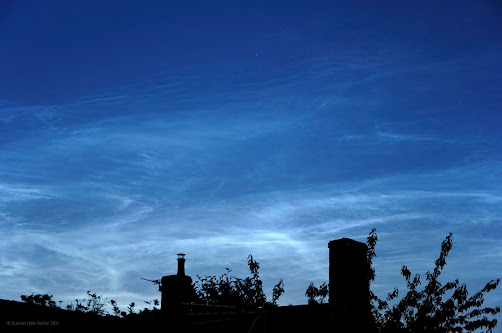We had a nice showing of three planets the other night about 45 minutes after sunset. Most prominent of these was Venus, the lowest of the three shown in this image taken on the 15th December (at 16:23 GMT). Venus is shining here at roughly magnitude -4.8 and through 8x24 binoculars you could just see the thin crescent of its sunlit side. Venus is approaching inferior conjunction on the 8th January 2022 when it will be between us and the sun. This has not been a good evening showing of the 'Evening Star' this winter due to the position of the ecliptic at this time of year.
The next brightest planet in the photo is Jupiter seen to the upper left. It was shining at magnitude -2.2 and is now beginning to fade from magnitude -2.9 when it was at opposition in August of this year. Between Jupiter and Venus is the much fainter planet Saturn shining at magnitude +0.7.
One of the other reasons I had been keen to look into this area of the sky was to see if I could find comet Leonard. This comet has just had its closest approach to the sun and is now emerging into the evening twilight. On this date the comet was observed to be as bright as 3rd or 4th magnitude and would have been located below and to the right of Venus in this image. Unfortunately, the glare from the setting sun has outshone the comet and, try as I might, I couldn't see it in the image or in binoculars. We might be able to see it climbing into the darkening sky as the days progress towards Christmas.
All text and images © Duncan Hale-Sutton 2021










